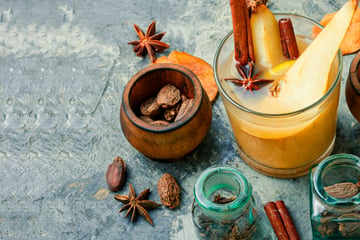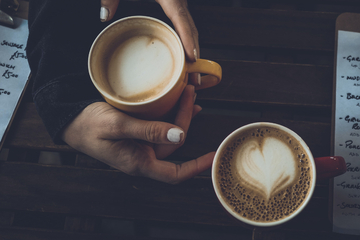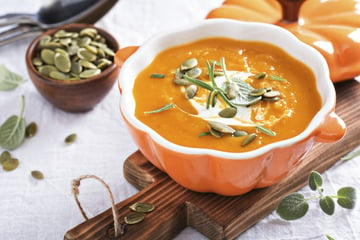Roasting coffee at home: How to make a blend, grind, and roast your beans
Are you sick of spending four bucks every time you want a cup of coffee? Are you tired of boring blends and weak roasts? Let's fix that! Here's how to make your own blend, roast coffee at home, and grind correctly.
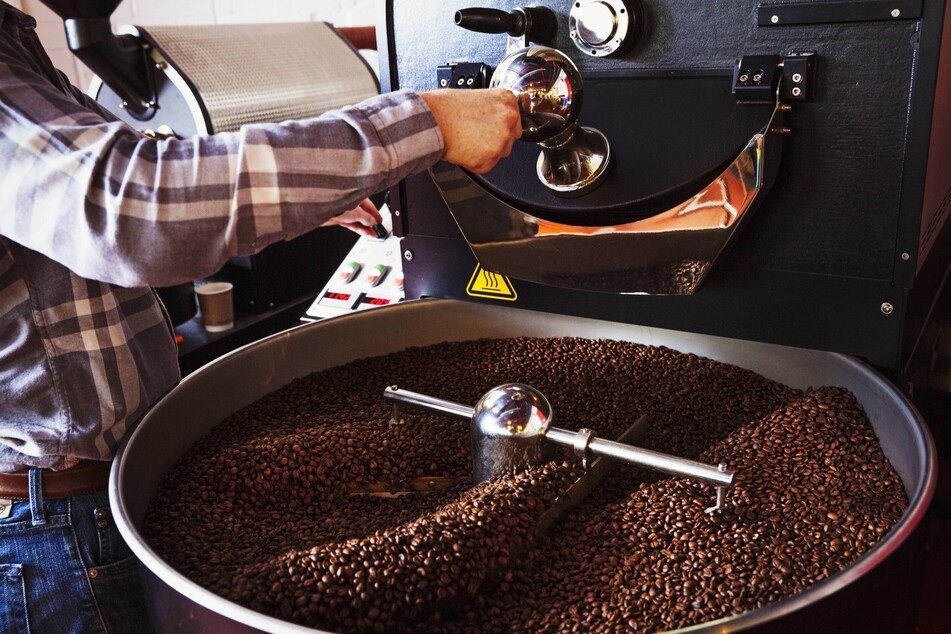
It's time to steer away from Starbucks. It's expensive and not even that good.
In fact, you can make much better coffee at home for far, far cheaper than going to any coffee shop at all. To perfect that coffee, you're going to want to roast your own beans.
If you're a fan of food and drink, this guide is for you! TAG24 will dive into how to make your own coffee blends, choose the right beans, mix and roast coffee at home, and grind the beans perfectly for your coffee-making method.
Are you ready to let your creative juices flow?
Make your own coffee blends
Making a good coffee blend isn't just a matter of combining a couple of different beans. It's not like Coca-Cola and Fanta, where you just chuck some of both in a glass and have a jolly ole time. Instead, it's a more complicated potion, requiring at least a basic understanding of how flavor profiles work.
There are three main components to a good coffee blend: balance, consistency, and palate. Let's break this down.
- Balance: The consistency of the story told by the various flavors found within the coffee beans. Is the sweetness complemented by the acidity? Is it overpoweringly bitter? Do the beans make sense together?
- Consistency: Through the selection and mixing of coffee beans, is every handful of the blend consistent? Has the roasting process been done evenly, or do you have an inconsistent flavor profile across each handful of beans?
- Palate: Is the overall flavor profile pleasurable to your palate, does it taste good, and does it fit what you want? Is it a more woody or nutty flavor, if that's what you want, or have you achieved that citrus dream?
Coffee blends are also about creativity. What do you want to improve about the coffee you love, and what are your favorite beans? Take these factors, add a dose of fun, and make something new and exciting with each and every roast.
Choosing the right coffee varieties
Coffee is one of the most versatile things in the world. If you want to build yourself a blend, then the first two things you should do are as follows: Decide what you want out of the blend, and then choose the coffee bean varieties that are right for that preference. Seems simple, right? Well, not really.
A blend of coffee generally consists of around 4-5 different types of coffee. These individual coffee types are known as "single-origin," so coffees from a single place and usually consisting of one individual type of coffee. Blending coffee types allows for a lot of customization, as each of these single-origin coffee beans holds different qualities and flavors.
Different countries have become known for different coffee flavors. When choosing the right coffee variety, it should be based on country, while, of course, considering whether the single-origin bean is sourced from an ethical and fair-trade farm.
Where do good coffee beans come from?
You can get fantastic coffee beans all over the world, but they all have distinctly different flavor profiles. There are two different types of blending: Single-origin blends (those where the beans have all come from roughly the same area) and multi-origin blends (those where the beans have come from a variety of places).
The four most common places where you'll get coffee beans from are Central America, South America, the African continent, and Asia. They each have different characteristics, and beans from different countries within each continent will have distinct characteristics as well.
Let's take at some coffee origin characteristics:
Central America: Coffee from Central America often contains more citrus notes with a relatively high level of acidity. The soil lends quite intense and concentrated flavors that are more chocolate-like and a little fruity. Common countries that source beans include Mexico, Honduras, and Nicaragua.South America: From the rich soil and warm sun comes a more delicate flavor full of nuttiness, citrus notes, acidity, and flavors often reminiscent of tea. Common countries include Brazil, Peru, and Colombia.
African Continent: The less known coffee center of the world, African countries like Uganda and Rwanda have unbelievably beautiful and flavorful coffee. Tasting of fruit and flowers, the soil lends a great deal of sweetness and nuttiness that is not found anywhere else in the world.
Asia: Other than the Americas, the Asian continent is possibly the largest supplier of coffee beans in the world. They lean further on the citrus notes, with a very high level of acidity. Big coffee growers in Asia include Papua New Guinea and Vietnam.
What about Italy and France? Southern European countries are generally pretty into coffee, but they don't grow their own beans. They will make their own blends (Italy in particular is famous for its coffee culture and brands, such as Lavazza and Segafredo), but these are generally multi-origin blends sourced from all over the world.
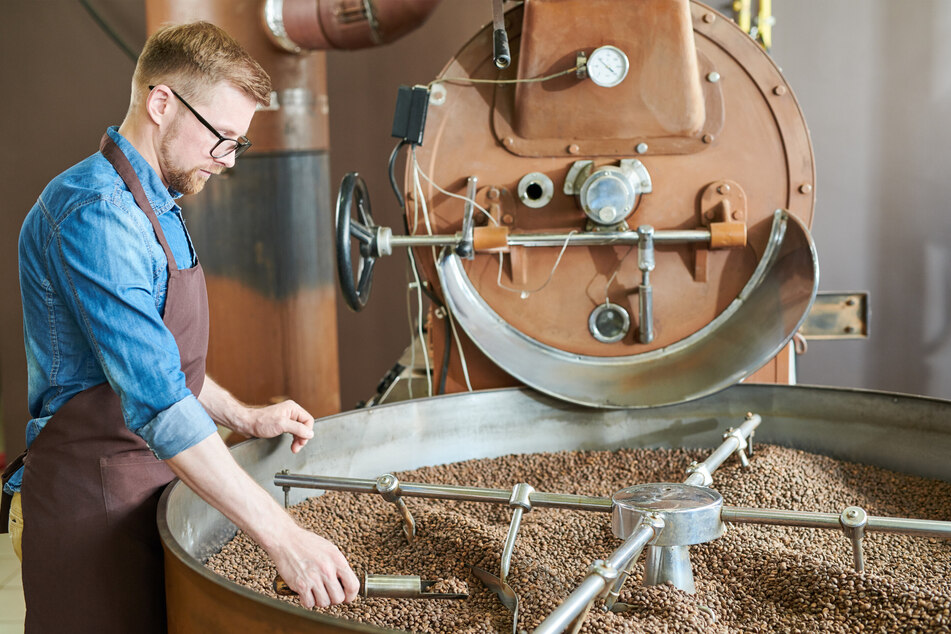
How to roast coffee beans
Roasting coffee beans is a relatively complicated process, particularly as there are multiple different kinds of roast, and the equipment can be relatively expensive. The best way to roast coffee beans is to buy a dedicated coffee roaster. While there are cheap machines out there, they likely won't do a great job, so you're going to want to go with a reasonably expensive one.
In such a situation, all you will need to do to roast your coffee beans is to follow the instructions laid out by the machine you have purchased. To do this, though, you first need to know what kind of roast you want.
What's the difference between light, medium, and dark coffee roasts?
Light coffee roast: Light coffee roasts are generally roasted until they reach an internal temperature of 350–400°F. They are not as oily as darker roasts, but more acidic because acidity is reduced as coffee beans are roasted. You can taste the blend more clearly across your palate.
Medium coffee roast: Medium coffee roasts are generally roasted until they reach an internal temperature of 400–430°F. This is your standard roast, as it lends itself to a more balanced profile and a reduced level of acidity.
Dark coffee roast: Dark coffee roasts are generally roasted until they reach an internal temperature of 460–490°F. As they are roasted for longer and at a higher temperature, a level of caramelizing will occur. This makes the flavor a lot richer and fuller, with barely any acidity.
A proper coffee roaster will have options for all three of these roasting levels. It should simply be a matter of setting it to the roast you desire.
Dancing beans: You need your coffee beans to keep moving around the roasting machine. This needs to be delicate, as you don't want them to break, but consistent so that you get an even roast across all of them. If a machine doesn't circulate the beans, don't buy it.
How to roast coffee beans professionally
Professional coffee roasters will use a large-scale machine, with an extremely accurate thermometer to make sure that they reach exactly the temperature that the roaster wants. These giant machines have a large rod that will make sure to consistently turn and mix the beans, simultaneously making sure that different beans mix to form a blend, and that the beans roast evenly.
When professionals roast coffee beans, they have the possibility of taking more attention to detail. As a result, they can reach an otherwise harder-to-reach roast: the medium-dark roast, which is formed between 430–450°F. These roasts are made famous in places like Vienna, where the rich oils are used to great effect.
How to roast coffee beans in the oven
If you want to use your oven, that is totally possible. What you need to do is place your beans in a metal colander and place that colander on an oven tray. This allows for airflow around the beans, making the roast more even. Heat up your oven to about 480–500°F and place the beans inside.
Every couple of minutes, you must use a pair of oven mitts to shake the colander and mix the beans, making sure that there is an evenness across the roast. Seeing as it isn't really possible to measure the beans' internal temperature, you need to listen and watch. Once they start to pop, they are very close, and it is just a matter of watching like a hawk until they have become the desired color.
How to grind coffee beans
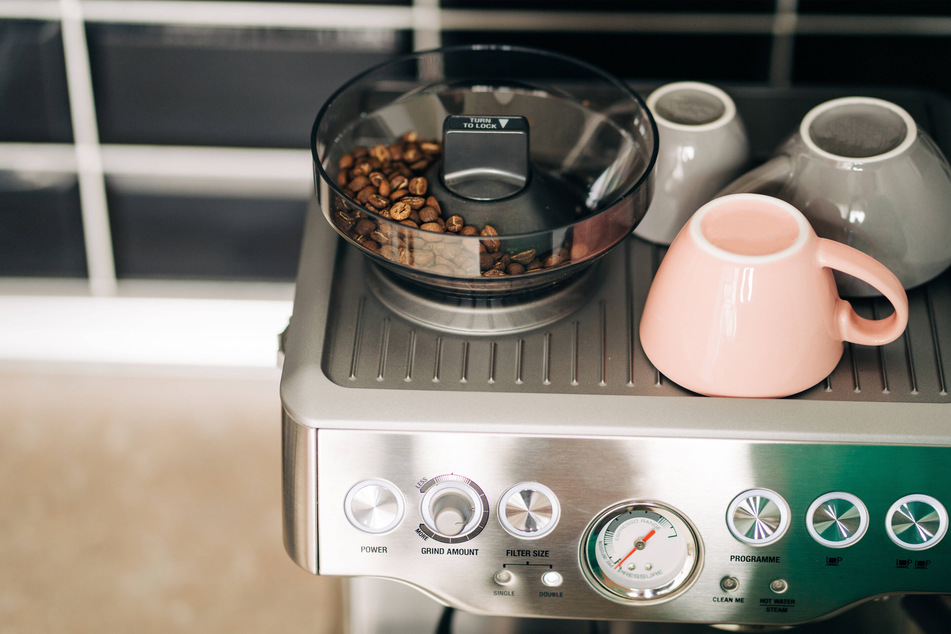
Your best bet for grinding coffee beans is to simply get yourself a grinder. The difficulty comes in when you start considering how fine the coffee needs to be. For home coffee making, you don't necessarily need your coffee to be ground super fine. Don't get us wrong: it still needs to be well ground! It just doesn't need to be as powdery as with espresso coffee.
Devices like the percolator, the French press, and the filter machine will all need a relatively fine grind, but won't suffer from it being a little chunky at times. With a standard grinder from your local kitchen store, you should do just fine with only spending about $50-60. These devices generally look like a food blender, with a little cap on the top and a scoop.
If you have an at-home espresso machine, it is likely that it will have its own in-built blender. These things aren't great, but will do the trick at a pinch. You need to remember that espresso coffee needs a very fine grind, so getting a professional coffee grinder is a good idea if you are really devoted. This will give you more control and will allow you to customize the blend to your taste.
How many ground coffee beans per cup?
This is a bit of a complicated question, because there are so many different ways to make coffee. We are talking about home coffee making (something that we have an in-depth guide for, if you're interested in making coffee at home), so we'll go through all the standard methods.
Here's how much coffee you need per cup in each of these methods:
- Professional espresso or home espresso: 1.5-2 tsp of ground beans
- Percolator: 10:1 ratio of coffee to water (in terms of weight), or the whole basket. This is a volumetric measurement, though, and should be adjusted to the roast and blend.
- French press: 1:15 ratio of coffee to water, so for every ounce of coffee, you should use 15 ounces of water.
- Filter coffee: About a tablespoon of ground coffee for every 3–4 ounces of water.
It also depends on how strong you want the brew to be, but beware: Devices are generally designed for a certain ratio of coffee to water. If you change this ratio, then you risk ruining the flavor profile and balance.
How to grind coffee beans without a grinder
If you don't have the money to pick up a proper coffee grinder, don't worry too much. Unless you are making espresso, you don't need an extremely fine blend. In such situations, you should use a mortar and pestle to pound and grind down the beans until they are a powder. You should try to get as fine as you possibly can, but remember that you don't need it to be a silky powder.
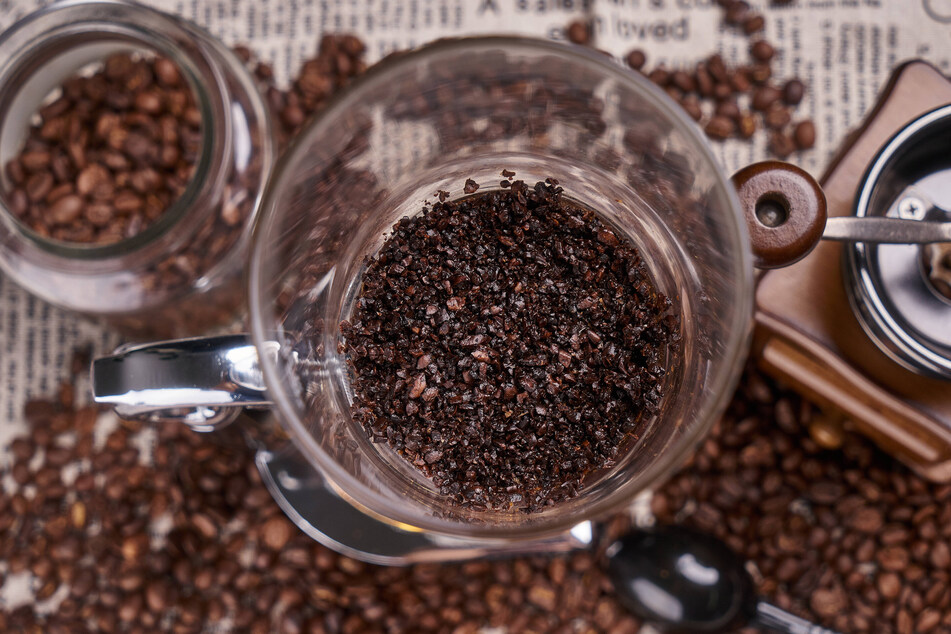
How long do coffee beans last?
Coffee beans last a very long time as long as they are kept in a sealed airtight container. The overall length of time, however, depends on whether the beans have been roasted or not.
Here's how long coffee beans will last, depending on the circumstance:
- Unroasted coffee beans (sealed): Approx. 2 years
- Unroasted coffee beans (unsealed): Approx. 6 months
- Roasted coffee beans (sealed): Approx. 6 months to 1 year
- Roasted coffee beans (unsealed): Approx. 1–2 months
So, how can I keep it fresh? The first thing to do is make sure you always keep your coffee in an airtight container or bag. Buy full beans, not pre-blends, and if you need to keep them for a long time, freeze them (don't put them in the fridge).
The perfect roasted coffee blend will change your life!
Commercial coffee can often be boring, with uneven roasts and grinding done so unsatisfactorily that the coffee comes out tepid and dull. Once you have the equipment, making coffee at home is actually much cheaper than constantly going to coffee shops, and roasting your own blend makes it a true joy.
Coffee is a temperamental fellow and can be hard to get right. If you roast it wrong, it'll taste weird, and if you grind it too early, it'll lose aromatics. But if you get it just right, it will blow your mind. Get creative and try roasting your own beans!
Cover photo: IMAGO / YAY Images


